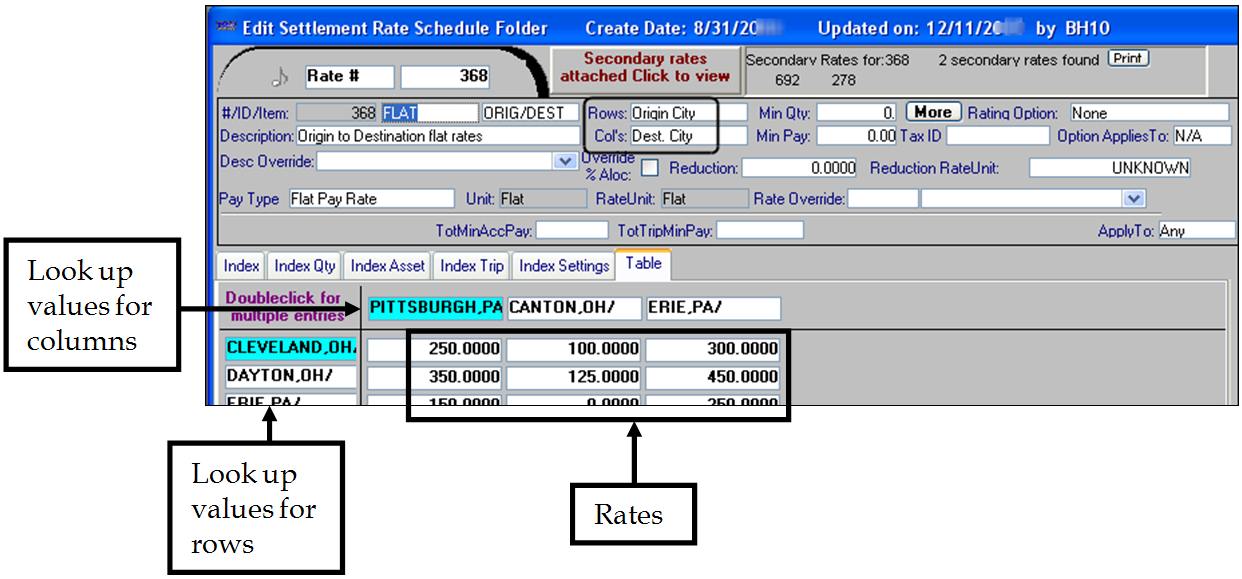Setting up a rate table
When a trip has been matched with a rate index, the rate header to which that index is attached determines the calculation method to be used when the rate schedule is applied. The rate header may contain a single unit rate, or it may be linked to a rate table, which is a matrix of per unit settlement rates.
When setting up rate tables, your selection in the Rows field and the Col’s field in the rate header section define what the rows and/or columns in the table mean.
The table may consist of rows only, columns only, or both rows and columns.
Only one table may be defined for a pay rate.
In the rate header shown below, rows are defined as Origin City and columns as Dest City. The corresponding rate table is shown below the header:

When the system finds a row/column match, the pay amount is calculated by multiplying the pay amount in the intersecting cell of the matrix by the number of pay units. The pay type selected in the rate header determines pay units. For example, in the rate header shown above, the pay type is Flat Pay Rate. For a trip with an origin city of Cleveland, OH, and a destination state of Erie, PA, a resource will be paid a flat rate of $300.00.